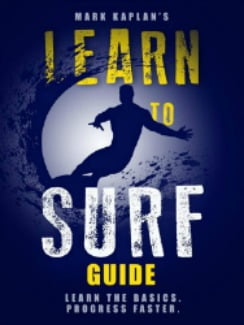How to Transition from Riding Foam Surfing Waves to Real Waves
In Oceanside Surf Lessons, new students begin riding foam surfing waves before learning to catch real waves. The reason is two fold. New students need to learn on soft top boards to minimize the difficulties and catch foam waves to learn the fundamentals and minimize the injuries.
Learning the First and Second Steps
Once students have learned riding foam surfing waves and mastered the fundamentals of balancing on the surf board, catching waves, popping up, and riding to the beach, they can advance. Students next learn to paddle through the foam waves, turn around, and catch the next foam wave. This is good practice for learning timing.
Once students feel comfortable handling themselves with oncoming waves and can time their turn around and catching of the next wave, they can progress. The next step is catching bigger foam waves and trying to catch some smaller real waves.
The Difference Between Riding Foam Surfing Waves and Real Waves
The difference between foam waves and catching real waves is about timing. Foam waves can be seen for a distance. A real wave breaks in a few seconds at a particular spot. You observe where they are breaking. You paddle to that area and patrol as you wait for the first sign of a wave forming.
Next you decide if you have to paddle toward, parallel, or toward shore to catch it as it arcs. The surfer turns his board toward the beach as the wave arrives and allows the wave to roll under the board. At the top of the wave, the surfer paddles hard two or three times and gets the board going down the face. Once the wave has the surf board, the surfer pops up.
Catching Real Waves at an Angle
A soft top board catches waves at an angle best to minimize pearling. Waves begin by breaking at once spot where the foam comes over the top called the apex. Then it begins to unfurl foaming what is called the pocket. On real waves you want to ride in the pocket.
To catch the wave at an angle, the surfer is paddling toward the corner away from the apex and as the wave gets closer to the beach. Then the surfer angles toward the beach and lets the pocket come under the surf board and paddles hard to catch the wave.
To catch a real wave on the face, you paddle toward the beach. To catch a wave at an angle, you point at 45 degrees toward the beach in the direction the wave is breaking. An in between technique is to catch the wave on the face and before popping up, point the nose toward the pocket and then pop up. Now you’ve got it.
Learn More:
For Oceanside Surf Lessons, see the Home Page
See the Post Surf Lessons Begin with Foam Waves
See the Post What You Learn in a 2 Hour Lesson
See the Post How to Progress in Surfing
See My Dry Land and In Water Demo video
See How to Catch a Green/Real Wave video
My New Surfing Course in an E-Book or Paperback plus Demo Video
Get the 18 Chapter, 7,500 word Course that can prepare you for a lesson or give you the fundamentals if you are going to try it on your own. 10 years of teaching 350 students a year has given me the insights on the most precise measures you must follow for success. This course is what I teach on the dry land and in water instruction. The Course includes a 15 minute video on my dry land and in water demonstration. Only $4.95
Buy the E-book for $4.95. Learn to Surf (Different cover but same book)
Buy the Paperback on Amazon $7.95
